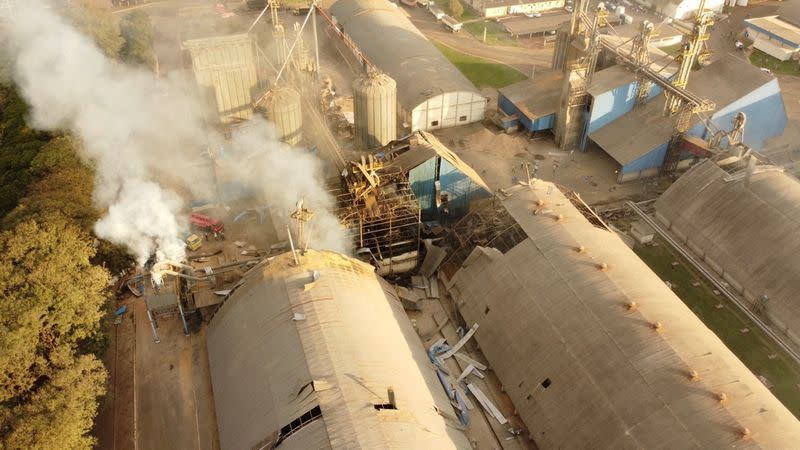Haitian workers killed in Brazil grain silo blast part of rising toll

By Ana Mano
SAO PAULO (Reuters) - Friends and family mourned seven Haitian workers killed in a grain silo explosion in southern Brazil during a wake on Friday, as a labor official flagged concerns about a spike in grain storage deaths in one of the world's top food suppliers.
At least eight workers were killed - the majority of them Haitians - and nearly a dozen others were injured in the Wednesday blast at an agricultural co-operative in southern Brazil called C.Vale in Parana state.
The deceased workers were 24- to 53-years-old and included one Brazilian national, C.Vale said.
The Haitians were temporary workers not directly employed by C.Vale, who had been outsourced from a local cargo transportation union for the peak of the grain season, a company spokesperson told Reuters.
C.Vale said on Friday that rescuers were still looking for a missing person potentially trapped under rubble and a massive pile of corn.
The silo where the explosion occurred stored about 12,000 metric tons of soybeans and 40,000 metric tons of corn, the company said.
Rudy Silva, an auditor for the Brazilian labor ministry focusing on grain storage facilities, told radio broadcaster CBN that the death toll from accidents involving silo workers is rising in the country.
Silva said workplace deaths involving silos totaled 69 in 2020, 90 in 2021 and more than 100 last year.
The labor ministry did not immediately return a request for comment on the numbers provided by Silva.
Including the deceased workers from the C.Vale blast, Silva forecast another 100 silo worker deaths in Brazil by year-end.
Experts warn that grain dust particles can be highly combustible, potentially causing fires or explosions in confined spaces. Research shows corn starch is one of the most dangerous and volatile.
(Reporting by Ana Mano; Editing by Brad Haynes and Aurora Ellis)

 Yahoo News
Yahoo News 
